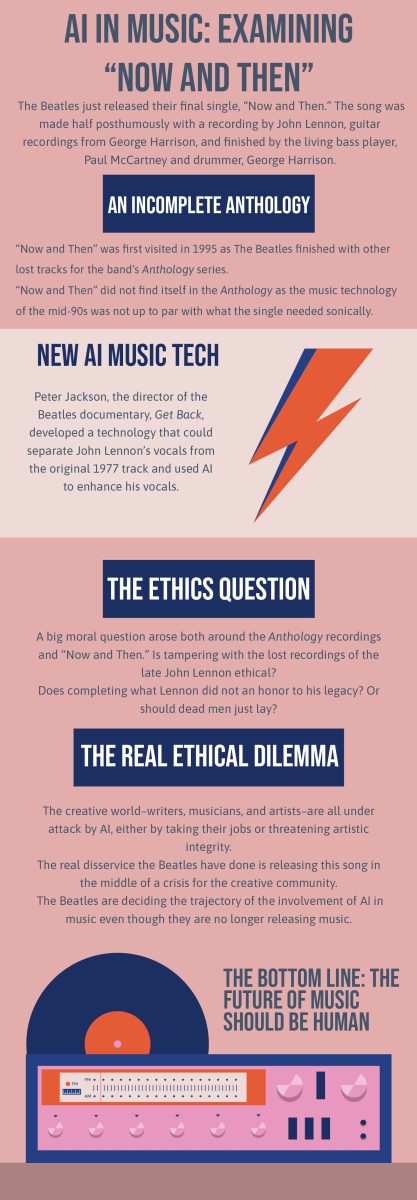by Dr. James Wanliss | Faculty Writer
Note: The views and opinions expressed in this column are those of the author and do not necessarily reflect the views and opinions of the BlueStocking newspaper as a whole.
The climate is real. It is a nonlinear system whose responses to inputs whether solar or terrestrial are rarely predictable with accuracy. It features powers subtle, intertwined, and most often far beyond our understanding. It changes and shifts constantly.
Overall Earth’s climate probably experienced modest warming during the twentieth century. I can’t think of anyone who denies this. Climate has always changed—upward and downward—throughout Earth’s history, long before any humans could conceivably have contributed anything significant to them. During the twentieth century there have been several episodes of global cooling and warming.
In the 1980s, some scientists began to suggest that global cooling extending into the mid-70s ended because of increasing concentrations of atmospheric CO2 — the gas of life — from the economic boom post World War II. That led to a cry that the planet lies on the edge of a global warming Armageddon. That drumbeat quickened, received political support, and today dominates discussion.
The argument, based mainly on output from computer models, is that increases in human produced CO2 will drive global warming out of control, with disastrous results.
Scientists use computer models as cartoon representations of the reality they try to simulate. The general rule is that the model, no matter how much money and effort poured into it, is wrong when it disagrees with the observed data. Data are real, models are caricatures. So then what do the data, rather than models, show?
Data show cooling ended around 1976, followed by global warming until 1997. But the modest warming has stopped. There has been no warming since 1997 to the present and scientists are scrambling to explain why. Models say that massive CO2 increases from India and red China over the past two decades should have caused quickening global warming. But data show there hasn’t been statistically significant warming for twenty years.
The scientific way is to adjust or reject models that fail to agree with the data. Therefore many scientists have begun to question the model that proposes human CO2 is causes dangerous global warming.
Politicians, however, are not so modest.
California’s Governor recently declared, at the Vatican, that saving the planet from global warming needs a wrenching transformation of civilization. He characterized those who disagreed with him as akin to heretics in need of more than “just a light rinse.” Brown said, “We need a total, I might say brainwashing. We need to wash our brains out and see a very different kind of world.”
I’ve always believed when you are told not to listen to opposing opinions that’s exactly when you should. Truth can stand scrutiny.
One idea for the absence of global warming is that it has something to do with the sun. The most recent United Nations Intergovernmental Panel for Climate Change (IPCC) report, to which I contributed as an expert science reviewer, put out the possibility that a cooling sun plays a role in global climate.
At just shy of 100 million miles away, our solar dance partner might seem too distant for relatively small events within it to have much impact on the earth. But the sun constantly blows a blistering ionized “plasma” gas toward our planet, its temperatures approaching 200,000°F.
Sometimes the wind blows hot, dense, and fast enough to cause problems on the earth — and glorious auroral light shows. The solar wind is invisible to the eye, but one can get an idea of what is going on by looking at the sun, because sunspots influence the solar wind. One can sometimes see large sunspots (which may be 12 times the diameter of the earth) with the naked eye. It is not advisable to try, because the sun blows off not only plasma but also electromagnetic radiation similar to the light from a welding torch.
Over 400 years of sunspot numbers show how sunspots usually see-saw over about eleven years. There are other times when sunspot numbers stay relatively low, or high, for decades. For five decades through the twentieth century solar activity rose steadily to rare heights. But now, in a new millennium, we meet a weaker sun than ever in living history. If the current pitiful solar activity continues, it may signal a low period for the sun like that associated with the “Little Ice Age,” over parts of the 16- to early 1800s.
Global cooling could replace the modest warming prevailing from the mid-1970s through the mid-1990s and the relatively stable global temperatures since 1997 to the present.
The global warming hypothesis is worth exploring, but it has metastasized into an ideology whose followers tolerate no alternatives. The primary hypothesis — human produced CO2 will produce catastrophic global warming — now so dominates conversation that to question it sounds like heresy.
Here is the problem: real data falsify the primary hypothesis.
And here is what we know. First, modest global warming, and cooling, of the twentieth century does not appear to be related much, if at all, to CO2 from human economic activity.
Second, we have an interesting decades-long experiment with accelerating human economic activity (mainly China and India) and CO2. While there are resulting massive increases in atmospheric CO2 the global temperatures stubbornly refuse to follow the forecasts of billion-dollar climate models.
Computer models suggested global warming must escalate because of CO2 emissions, but the global temperature fails to rise. In other words, the theory and modeling, so prejudiced by the primary hypothesis, have hopelessly failed to match up with the real experimental data.
King Canute famously uses the tide to prove his inability to control the elements and his respect to the greater authority of God. Those who have political power may believe the illusion that they control events. That, after all, is the reason why the story of King Canute retains, and will always retain, its relevance. Climate data takes apart the dogmatism of climate alarmists.
In the words of Richard Feynman, “It doesn’t matter how beautiful your theory is, it doesn’t matter how smart you are. If it doesn’t agree with experiment, it’s wrong.”







